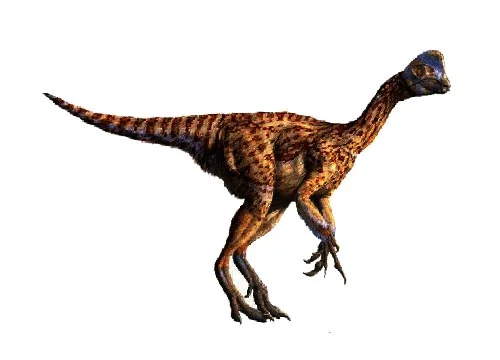Oviraptor (Egg thief)

Oh-vee-rap-tor
Henry Fairfield Osborn - 1924
Carnivore
Estimated up to 2 meters long
Small Theropod
O. philoceratops (type)
Mongolia - Djadochta Formation
Late Cretaceous, 75 million years ago
Oviraptor Facts
Oviraptor is a genus of theropod dinosaur that lived during the Late Cretaceous period, approximately 75 million years ago. The name Oviraptor means “egg thief”, but the dinosaur’s true nature was not that of a thief, as was originally thought. The first known specimen of Oviraptor was discovered on a nest of dinosaur eggs, leading scientists to believe that it was stealing or preying on them. However, further research revealed that the eggs actually belonged to Oviraptor itself, and that it was most likely incubating them.
Oviraptor was a small to medium-sized dinosaur, measuring up to 2 meters (6.5 feet) in length and weighing around 50 kg (110 lbs). It had a bird-like beak, large eyes, and a short, deep skull. Its jaws were toothless, which suggests that it was an omnivore that fed on a variety of plant and animal materials.
One of the most distinctive features of Oviraptor was the presence of a prominent crest on its head, which was made up of fused bones and supported by bony struts. The function of this crest is still not fully understood, but it may have played a role in visual display or communication with other members of the same species.
Oviraptor is also known for its well-preserved fossils, which have provided important insights into dinosaur behavior and evolution. In addition to the famous nest of eggs, several specimens of Oviraptor have been found in association with their prey, including small reptiles, mammals, and even other dinosaurs. These discoveries suggest that Oviraptor was a versatile and opportunistic predator, capable of adapting its diet to the available resources.
In conclusion, Oviraptor is a genus of theropod dinosaur that lived during the Late Cretaceous period. Its name means “egg thief”, but it was later found that it was actually incubating the eggs. Oviraptor was a small to medium-sized dinosaur with a bird-like beak and a prominent crest on its head. It was likely an omnivore that fed on a variety of plant and animal materials, and was a versatile and opportunistic predator. Oviraptor is an important dinosaur for scientists to study because it provides valuable information about dinosaur behavior and evolution.



